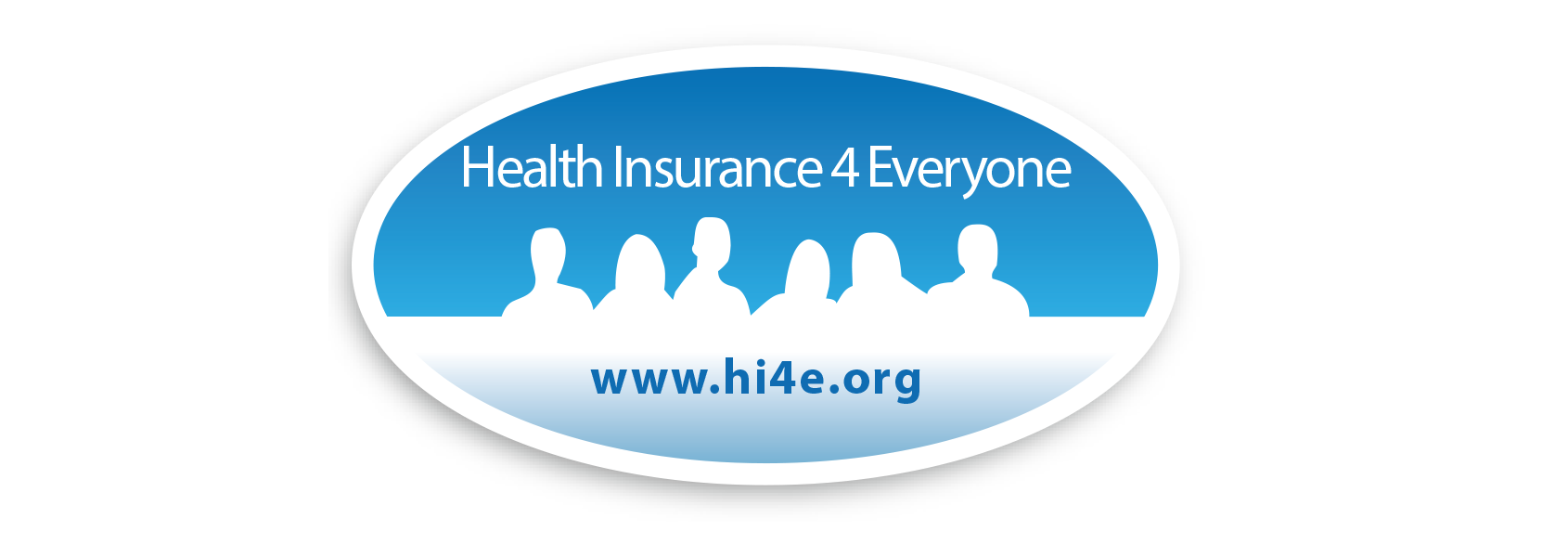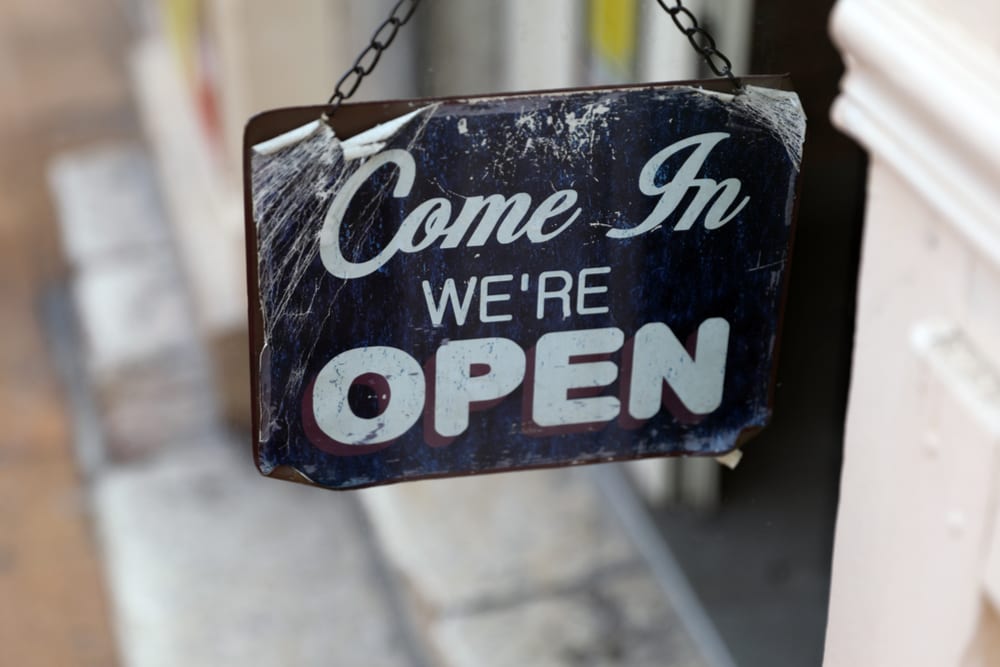
There are now over 5 million confirmed cases of the coronavirus and more than 325,000 known deaths around the world. Over 2 million people around the world have recovered from the virus. Despite the US having less than 5% of the world’s population, there are almost 1.5 million confirmed cases with over 100,000 deaths, representing over one-quarter of all fatalities and almost one-third of the confirmed cases. Over 450,000 people have recovered from Covid 19 but there are now cases in the US of people that have been re-infected, meaning they did not develop antibodies to build immunity with their first infection.
Forty-eight states will be at least partially reopened this week as health experts continue to warn of the danger of a hasty end to lockdowns. Each state has their own guidelines on what businesses have reopened and a timeline on further openings. There are 17 states that have seen an uptick in new cases since reopening. Officials from the World Health Organization say those who ignore measures such as social distancing are at risk of seeing a resurgence of the coronavirus. They also advise people to wear face masks when they are in groups. While coronavirus generally doesn’t spread outdoors as easily as it does indoors, there’s still a risk with any cramped crowd — especially because the virus can spread by just talking.
A cluster of new cases emerged after a swim party in Arkansas. In Atlanta, several recent prep school graduates also tested positive for the coronavirus, including one who had friends over for a graduation party. NY Governor Andrew Cuomo confirmed new COVID-19 cases are predominantly coming from people leaving their homes to shop, exercise or socialize. Meanwhile, in California, Orange County’s coronavirus cases continue to mount, with over 4,000 cases reported. COVID-19 cases are on the rise in Texas, with 1,800 new infections reported last Saturday — the highest single-day increase in Texas so far. South Dakota has also seen a spike in cases since reopening.
Some states are now seeing drops in the number of confirmed cases. New Jersey, one of few states that had one of the strictest and longest stay at home orders, has seen a decrease in cases. This appears to be relatively bright news for hard-hit New Jersey, second in the country only to New York for the number of total reported cases with over 143,600 confirmed and over 10,000 deaths.
Missouri also saw a drop in cases when they began allowing all businesses to reopen May 4, but then an increase during the second week of reopening. Businesses were allowed to reopen provided they could abide by certain social distancing guidelines. Indoor retail businesses must limit their number of customers to no more than 25% of normal capacity, and local communities can choose stricter rules if they choose. Missouri has over 11,000 cases and over 600 deaths. Idaho, which only has around 2,500 cases, also saw a decrease in reported cases.
As each state opened, many leaders stressed the importance of following the social distancing guidelines but left responsibility up to it’s’ citizens. The CDC recommends wearing cloth face coverings in public settings where other social distancing measures are difficult to maintain (e.g., grocery stores and pharmacies) especially in areas of significant community-based transmission. They say that maintaining 6-feet social distancing remains important to slowing the spread of the virus. CDC is additionally advising the use of simple cloth face coverings to slow the spread of the virus and help people who may have the virus and do not know it from transmitting it to others. Cloth face coverings fashioned from household items or made at home from common materials at low cost can be used as an additional, voluntary public health measure.
Read more

Physicians caution that amid a desire to put an end to the Covid-19 pandemic, developers of drugs and vaccines have become overly enthusiastic about the chances their products will work. Several vaccine developers have issued statements looking into the future — setting possible timetables for study completion and vaccine manufacturing.
Biotech company Moderna said early trials of their coronavirus vaccine show promising results as volunteers developed antibodies against the virus. Eight people took part in the study. The company, which is developing the vaccine with the National Institutes of Health, says it will move on to larger-scale trials and that a vaccine could be made available as soon as January. Moderna is collaborating on its vaccine development with the National Institute of Allergy and Infectious Diseases. Dr. Anthony Fauci, the director of NIAID, said while Moderna’s numbers were limited, “it was good news” and he was “cautiously optimistic” about the vaccine.
According to the World Health Organization (WHO), there are currently over 100 vaccine efforts underway around the world. There are 10 vaccines in human clinical trials worldwide. There are four teams in the United States: Moderna, Pfizer, Inovio and Novavax. Five Chinese companies have vaccines in human trials. University of Oxford is the only team in Europe currently running trials. Inovio and Moderna have said they expect their large-scale clinical trials, known as Phase 3 trials, to last around six months. Pfizer hasn’t given a timetable for its Phase 3 trial. Worldwide, there are 114 more candidates in pre-clinical trial stages.
One big stumbling block for any vaccine trial is that Covid-19 infection rates in many areas of the world are flattening out or declining. The point of Phase 3 is to vaccinate people and then see if they naturally become infected, and with lower rates of circulating virus, the study subjects are less likely to be exposed to the virus in the first place. For a vaccine clinical trial to be successful, there needs to be sufficiently high levels of the virus circulating in the community. If there isn’t enough virus around, it will be impossible to tell if the vaccine protected the study subjects, or if they were just never exposed to the virus.
The global effort to develop a vaccine is just the beginning of this race. It also takes time to ramp up vaccine production and deciding how it will be distributed will be difficult in a world of more than 7 billion people. New drugs and vaccines traditionally go first to the wealthiest countries and that’s the expectation in this case as well. But the exact order could depend on where the vaccine is first developed and what that countries priorities are in distribution. Wealthier countries have been hit hardest by the virus so far. But in many of these nations, COVID-19 cases are leveling off or declining, while they are rising rapidly in the developing world, including countries such as India, Brazil and Peru. Nations and drug companies are likely to face a range of conflicting pressures with the need to provide the vaccine at home and intense scrutiny to share it widely, fairly and cheaply abroad.
Read more
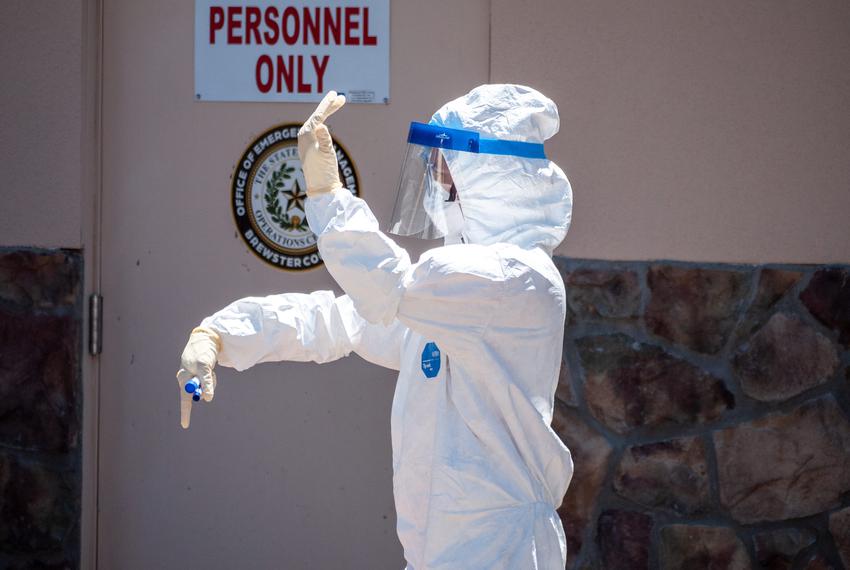
In just a few months, Covid 19 has spread across the globe and left in its wake a trail of social paralysis, economic ruin and even death. While states across the US issued stay at home orders to slow their healthcare systems from being overrun, other states like New York, weren’t so lucky. As some U.S. states start to lift pandemic-related restrictions on businesses and public spaces, there is a fear that infections will resurge in those places — and that if that happens, the virus won’t stay put.
Crystal Watson of the Johns Hopkins Center for Health Security said “I do believe we are going to see additional surges of cases from this epidemic that will not be contained within a state. Neighboring states and perhaps states across the country and countries across the world are going to have cases imported from those outbreaks.” Experts say the problem is that diagnostic testing remains so limited that a second surge of cases could silently build. The nationwide goal of conducting 2 million tests a week is below what most experts say is needed to adequately track the virus and that plan won’t be in place until at least the end of May.
No one knows how quickly and how expansively the spread of the virus will pick up as states roll back restrictions, and governors are generally outlining gradual changes. The incubation period of 2 to 14 days coupled with the turn-around time of test results in some areas taking a few days, means we just have to wait and see if reopened states will experience a surge in cases. More than half the states have relaxed restrictions but experts say it will be at least two to three weeks before we see an increase in the number of infections because it takes time for individuals to infect others and for them to display symptoms.
Public health experts warned of the possibility of spikes before states made the decision to reopen. Even as their predictions prove true in some states, others are still moving forward with plans to reopen. Proponents of relaxing social distancing restrictions also point out that spikes in positive cases are to be expected with expanded testing.
In Georgia, gyms, salons, and restaurants are operating with limits. In Colorado, retail stores can have curbside pickup and elective surgeries are back on. And starting tomorrow, malls, theaters, and restaurants in Texas can open with 25% occupancy. These and other states have plans for further easing of distancing policies as long as case counts don’t spike. If these states do see spikes they may have to roll back the restrictions as needed.
Read more
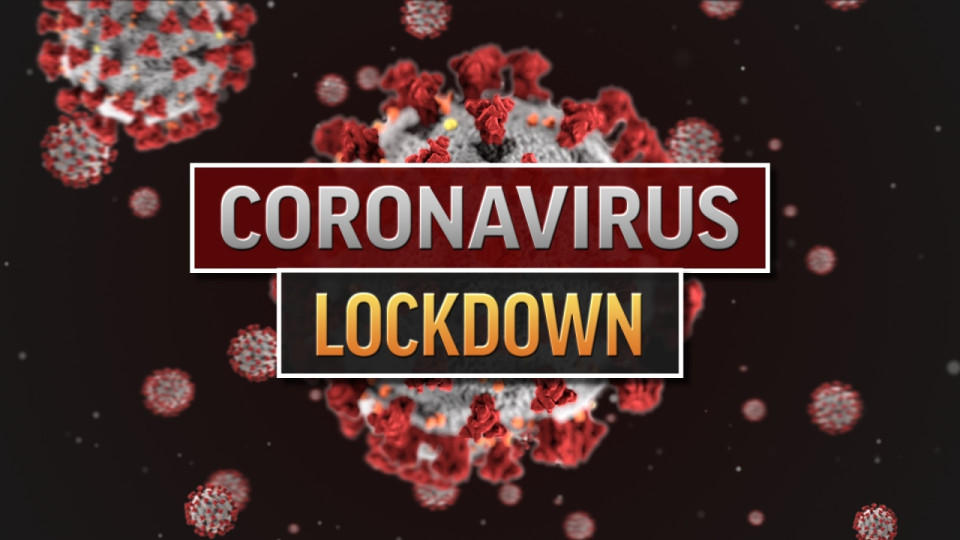
Millions of U.S. residents are now under some sort of stay-at-home order in response to the Covid 19 pandemic. There are now over 500,000 confirmed COVID-19 cases in the U.S. — more than one-quarter of the reported total cases worldwide, though the actual numbers both in the U.S. and around the world are likely much higher due to limited testing. Governors that were originally against stay-at-home orders finally succumbed last week after COVID-19 cases in their states increased rapidly.
There are still a few states that have not issued stay at home orders. Arkansas, Iowa, Nebraska, North Dakota, South Dakota, Utah and Wyoming have yet to issue any state-wide orders but they have a number of local directives suggesting residents stay indoors or have stay at home orders in place only in their harder hit counties.
For the other 95% of Americans, the states they call home slowly joined the majority to issue stay at home orders for all non-essential activities. Just as governors issued stay-at-home orders on a rolling, piecemeal basis, they have done the same on the backend, with each governor setting his or her own time frame for lifting the order. Consequently, we have end dates spanning two months, from April 15 to June 10. More than half of the states have already extended the end date of their original order and the new end date could be pushed back again as the pandemic unfolds.
Three Pacific coast states — California, Oregon and Washington — have formed an alliance called the “Western States Pact” that will reopen at the same time. They announced that they “have agreed to work together on a shared approach for reopening our economies – one that identifies clear indicators for communities to restart public life and business.” California was the first to issue its order but within 3 days, Oregon and Washington followed suit. All three states orders were issued with no set end date so their orders stay in place until further notice.
On the east coast, seven states — Connecticut, Delaware, Massachusetts, New Jersey, New York, Pennsylvania and Rhode Island — have formed the “Multi-State Council” that will also reopen at the same time. New York Governor Andrew Cuomo said the council “will come up with a framework based on science and data to gradually ease the stay at home restrictions and get our economy back up and running.” Many of these states with an end date on their original order issued extensions with new dates in May.
Two states have stay-at-home orders that are set to expire soon; Idaho (April 15) and Kansas (April 19). Both Idaho Governor Brad Little and Kansas Governor Laura Kelly have indicated that they will extend the orders. Eight states’ orders are due to expire between April 20 and April 26. Indiana, Mississippi, Alaska, District of Columbia, Missouri, Montana, Wisconsin and Colorado are fast approaching their end dates. Four governors — half of this group — have already issued one extension and several have stated they are planning another.
For the last week of April, 19 states are due to lift their stay-at-home mandates. South Carolina, New York, North Carolina, Alabama, Arizona, Florida, Georgia, Hawaii, Illinois, Louisiana, Maine, Michigan, Nevada, New Mexico, Pennsylvania, Tennessee and Texas have end dates at the end of April but again, more than half of the governors in this group have already extended the end dates for their orders once.
Nine states have stay-at-home orders that end May 4 or later. Notably, seven of them have already bumped back their end dates once, from April to May. If the trend continues, we can expect more states to be extending their mandates into May.
Read more

The coronavirus pandemic continues in almost every corner of the globe, with the number of confirmed COVID-19 cases worldwide surpassing 1 million people — though the true number is certain to be far higher due to a critical lack of testing globally. The largest number of cases is in the United States with over 350,000 confirmed. Over 10,000 people in the US have died of Covid-19 as the virus continues to spread.
In Europe, COVID-19 has pushed hospitals across the continent past their breaking points. Spain has reported over 120,000 cases and their death toll topped 10,000. In the U.K., London’s ExCeL convention center has been converted into an enormous field hospital with plans to treat up to 4,000 COVID-19 patients. Over 2,300 people have died from the disease across the U.K.
In Italy, there are over 100,000 confirmed cases and their COVID-19 deaths have topped 15,000. It’s been reported that Italy’s true toll is far higher because the country can’t spare the resources to test every dead body. U.S. Vice President Mike Pence said models predict the United States faces a trajectory of COVID-19 deaths similar to Italy’s. The computer model used by the White House projects close to 82,000 COVID-19 deaths in the United States by August 4, assuming the country implements full social distancing until the end of May.
The 81,766-death projection is a slightly less grim figure than the 93,531 cited earlier by the administration. The model projects that the country may need fewer hospital beds, ventilators and other equipment than previously estimated, and that some states may reach their peak of COVID-19 deaths sooner than expected. Not all states are using the federal government’s forecasting model.
While the White House projects that coronavirus cases in the nation’s capital would peak later this month, the local Washington, DC government is relying on a different computer model that says it won’t peak until late June or early July. Health experts warn against early optimism and say it’s best to prepare for worst case scenarios.
Experts say that pandemic modelling is almost never precise and the Covid-19 pandemic, the uncertainty in the projections is because of lack of access to good data coupled with the fact that we just don’t know enough about the coronavirus. Another factor that adds to the uncertainty is how people will behave and what kinds of policies will be enacted to change contact patterns in the weeks and months ahead. The ranges estimated really depends on how much people actually adhere to social distancing policies and how quickly these policies are issued.
Read more
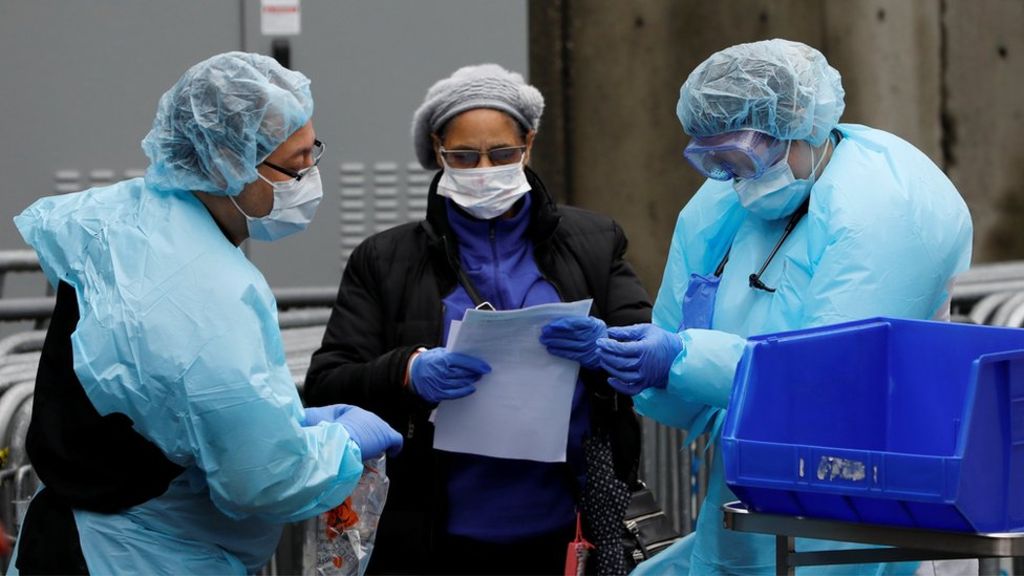
In New York City, the epicenter of the US crisis, the death toll from COVID-19 is over 4,500 and continuing to climb. There have been more than 140,000 confirmed cases of the coronavirus discovered in New York, including more than 76,876 in New York City. Thirty-five percent of the confirmed cases in the US are in the state of New York. Governor Andrew Cuomo warned state residents to expect a high death rate through July.
The Federal Emergency Management Agency is dispatching more than 250 ambulances and 85 refrigerated trucks to New York to serve as temporary morgues. In Central Park, an emergency field hospital began operations to treat spillover patients from nearby Mount Sinai Hospital. Mayor Bill de Blasio has repeatedly warned city hospitals are in dire need of millions of masks, hundreds of thousands of gowns and hundreds of ventilators, and are on the brink of running out of supplies.
Following complaints by health care workers about their inability to get tested for the coronavirus despite a colleague recently dying from COVID-19, the Mount Sinai hospital system in New York City will begin providing tests on Tuesday for any employee who shows symptoms of the disease. Mount Sinai will use PCR tests for anyone showing symptoms. They will also administer a serum antibody test to anyone who was symptomatic.
The Justice Department and Department of Health and Human Services announced that hundreds of thousands of masks and other pieces of medical equipment seized from a Brooklyn man have been distributed to medical workers on the front lines treating novel coronavirus patients in New York and New Jersey. According to the DOJ, the equipment seized and distributed includes roughly 192,000 N95 respirator masks, nearly 600,000 medical gloves, 130,000 surgical masks, procedure masks, N100 masks, surgical gowns, disinfectant towels, particulate filters, bottles of hand sanitizer and disinfectant spray. Prosecutors say 43-year-old Baruch Feldheim hoarded the supplies in order to take advantage of the COVID-19 crisis and was selling them to doctors and nurses at prices as much as 700% above market value.
Governor Cuomo said it’s unclear what will happen after New York hits its peak. Cases could begin dropping off or there could be more of a plateau effect, in which new cases and death rates remain flat. Cuomo said the falling rate of infection will not be met with a slackening of social-distancing measures. Schools and nonessential business will remain closed at least until April 29 and there will be higher fines for people violating social-distancing rules. The maximum fine is now $1,000.
Read more

Dr. Anthony Fauci, speaking on CNN’s “State of the Union”, offered his prognosis as the federal government weighs rolling back guidelines on social distancing in areas that have not been as hard-hit by the outbreak at the conclusion of the nationwide 15-day effort to slow the spread of the virus. The U.S. government’s foremost infection disease expert says the United States could experience more than 100,000 deaths and millions of infections from the coronavirus pandemic.
The US has become the epicenter with about 125,000 cases of COVID-19 in the U.S. and over 2,100 dead as of March 29, 2020. Most people who contract COVID-19 have mild or moderate symptoms, which can include fever and cough but also milder cases of pneumonia, sometimes requiring hospitalization. The risk of death is greater for older adults and people with other health problems. Hospitals in the most afflicted areas are straining to handle patients and some are short of critical supplies.
The US president has suggested that a target date for reopening the U.S economy, which has been battered by the coronavirus outbreak, is April 12, Easter. But public health officials warn that lifting restrictions too soon could lead to more deaths and further damage the economy. To limit the spread of the coronavirus, the Centers for Disease Control and Prevention has issued social distancing guidelines and called for gatherings of more than 10 people to be canceled, while governors have ordered residents in their states to remain in their homes and ordered nonessential businesses to close.
The CDC has issued a domestic travel advisory for New York, New Jersey and Connecticut. “Due to extensive community transmission of COVID -19 in the area, CDC urges residents of New York, New Jersey, and Connecticut to refrain from non-essential domestic travel for 14 days effective immediately,” the CDC said in a statement. “This Domestic Travel Advisory does not apply to employees of critical infrastructure industries, including but not limited to trucking, public health professionals, financial services, and food supply.” The CDC also noted that the governors of the three states would “have full discretion to implement this Domestic Travel Advisory.”
With more than 124,000 cases and 2,046 deaths nationwide, the three states make up more than half of the cases and nearly half of the deaths. New York State has over 55,000 confirmed cases and over 2,000 deaths. New Jersey has over 11,000 confirmed cases and 140 deaths. Connecticut has over 1,200 confirmed cases and 33 deaths. Most of the Connecticut cases are in Fairfield County where many residents commute into New York City for work.
Read more

As homebound Americans are online for work and to keep in touch with friends and family, some internet providers have lifted data caps without significant interruptions to service from the increased bandwidth. The crisis has renewed calls for the FCC to regulate the internet as a utility and for a reversal of a repeal of net neutrality protections. Many are also adhering to the FCC’s Keep Americans Connected Pledge (PDF), which asks the signees not to terminate a customer’s service for non-payment. Below are the providers and what they have pledged.
AT&T – All AT&T home Internet Wireline customers, as well as Fixed Wireless Internet customers, can use unlimited data. AT&T will continue to offer $10/mo Access from AT&T service for qualifying customers. They will also not terminate the service of any customer who can’t pay their bill, and will waive the fees associated with late payments within the next 60 days. All their public Wi-Fi hotspots will be open to everyone.
CenturyLink- CenturyLink said it has committed to waive late fees and to not terminate a residential or small business customer’s service due to financial circumstances associated with COVID-19 for the next 60 days. They are also suspending data usage limits for customers during this time period and hav committed to the FCC’s Keeping Americans Connected Pledge.
Comcast- Comcast has paused enforcement of its data caps for 60 days, giving all of its customers unlimited data for that period. (Comcast normally gives its Xfinity customers two “grace” months for every 12, allowing them to exceed their data cap without penalty.) New subscribers to Comcast’s $9.95/month Internet Essentials plan will receive two months free, and speeds were increased to 25Mbps down and 3Mbps up. Comcast is also making its Xfinity WiFi service free for everyone, regardless of whether you’re a Comcast subscriber or not.
Cox- Cox is eliminating data usage overages for the next 60 days. Customers with a 500GB or existing Unlimited plan will receive credits. They also will not terminate service for any residential or small business customers, and would open its Cox WiFi hotspot network to keep the public connected.
Cox is offering free support calls and the first month free to its low-cost Internet service, Connect2Compete. Customers on its Essential plan will see their speeds increased from 30Mbps to 50Mbps.
Charter (Spectrum)-Charter Communications’ Spectrum services does not have data caps. They will offer free Spectrum broadband and Wi-Fi for 60 days if that household has K-12 students or college students who do not already have a Spectrum broadband subscription. Charter said it will open its Wi-Fi hotspots for public use.
Mediacom Communications- Mediacom has paused monthly data allowances through May 15 across all broadband service tiers. New customers who sign up for Mediacom’s Access Internet 60 broadband service can do so for $19.99/mo for 12 months, rather than $29.99/mo. It has also made its Wi-Fi hotspot network publicly accessible, for free, for 60 days. They also will not disconnect service or assess late fees for the next 60 days to any customer who calls and informs the company that they cannot pay their bill.
Sprint- Sprint has extended its network to include T-Mobile’s network as well for the next 60 days. Sprint has also signed the Keep Americans Connected Pledge and will waive fees and not terminate services if customers are unable to pay because of the coronavirus for the next 60 days. Customers with metered data plans will now receive unlimited data for 60 days. They will also receive an additional 20GB of hotspot data for the same period.
Starry- Wireless broadband ISP Starry has made Starry Connect, a broadband program for public and affordable housing owners, free through May. Normally, the program, which provides 30Mbps symmetrical speeds, is $15/mo. Starry has also agreed to suspend cancellation of service due to nonpayment due to the coronavirus. It already does not charge additional fees or late fees. Starry’s service does not include data caps, either.
Verizon- Verizon will waive late fees and keep residential and small business customers connected if negatively impacted by the global crisis. It is also upgrading the data plan on its Verizon Innovative Learning program for Title 1 middle schools from 10GB/month to 30GB/month for the next two months and removed data caps on Verizon home Internet subscribers. They will also waive overage charges in addition to pledging to not terminate service and waive late fees.
Read more
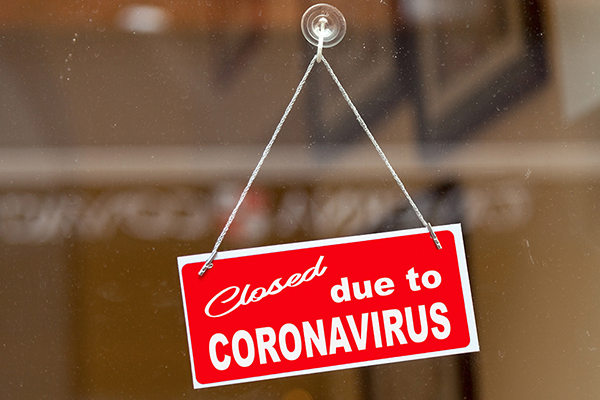
At least 24 states have enacted policies to close nonessential businesses in an effort to slow the spread of Covid-19 in the United States. While guidance varies from state to state, recreational spaces like museums, movie theaters, gyms, day cares, music venues and malls, as well as personal care retailers like spas, nail and hair salons, tend to fall in the nonessential businesses category.
The states with nonessential business shut-downs are Washington, California, Oregon, Nevada, New Mexico, Oklahoma, Louisiana, Illinois, Kentucky, Indiana, Wisconsin, Minnesota, Ohio, West Virginia, Virginia, Pennsylvania, New York, Vermont, Massachusetts, Connecticut, New Jersey, Delaware and Maryland. Other states like Missouri and Kansas have shut down orders in certain counties.
Shuttering nonessential businesses resulted in tens of thousands of American workers losing their jobs in recent weeks. In New York and New Jersey, so many people filed for unemployment insurance over the past week that both states’ online systems crashed. While guidance varies from state to state, recreational spaces like museums, movie theaters, gyms, day cares, music venues and malls, as well as personal care retailers like spas, nail and hair salons, tend to fall in the nonessential businesses category.
In New York, where Gov. Andrew Cuomo on Tuesday warned that the “rate of new infections is doubling about every three days,” essential businesses that remain open include health care facilities, infrastructure and manufacturing entities and essential services like trash collection, law enforcement and homeless shelters. Bars and restaurants can only offer take-out or delivery.
Read more
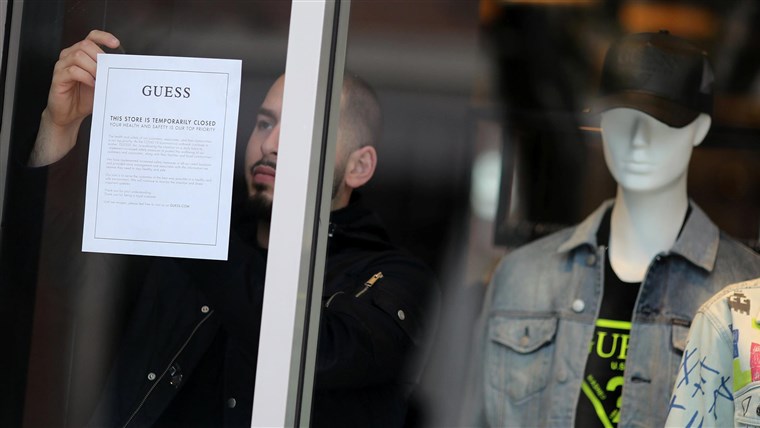
As concerns about the coronavirus rippled across the globe, the US president declared the Covid-19 outbreak a national emergency as public life in America continues to grind to a halt. Schools have closed to millions of students, creating anxiety for working parents across the country. Travel bans have been widened and some cities across America have issued curfews or “shelter in place” orders to slow the spread of the virus. More “shelter in place” orders are expected as the number of confirmed cases continues to rise and has now been found in all 50 states.
Shelter in place orders will come from local government rather than federal. A growing number of countries have also imposed lockdowns that effectively shut down public life, but the details of such lockdowns vary dramatically. Italy banned all public gatherings and set a 6 p.m. curfew but allowed travel for work or health reasons, while in China, millions of residents are restricted from even going to shop for groceries.
The “shelter-in-place” order that San Francisco adopted has fairly large exemptions for health, work, food and even exercise. City officials ordered residents to remain in place at their homes except for essential activities, essential business, and essential government functions, including tasks essential to maintain health and safety, such as obtaining medicine or seeing a doctor or getting necessary services or supplies for themselves or their family or household members, such as getting food and supplies, pet food and supplies necessary for staying at home.
The order also includes:
- Engaging in outdoor activity, such as walking, hiking or running provided that they maintain at least 6 feet of social distancing.
- Caring for a family member in another household.
- Caring for elderly, minors, dependents, people with disabilities or other vulnerable persons.
Treasury Secretary Steven Mnuchin outlined a variety of potential proposals to Senate Republicans as part of a legislative package to help Americans and industries that are reeling from the coronavirus. The administration proposed an initial $250 billion could be sent to Americans as early as the end of April if it can muster congressional approval.
Sen. John Thune noted that getting cash assistance to Americans is something that has historically taken some time, but “I think there are ways now electronically that you can process things more quickly.” The proposal has fairly widespread support from Senate Republicans, who say it will offer immediate assistance to Americans impacted by the virus. Some lawmakers have varying ideas about how the proposal should work, including who should receive the payments and how much each American should get.
Read more












